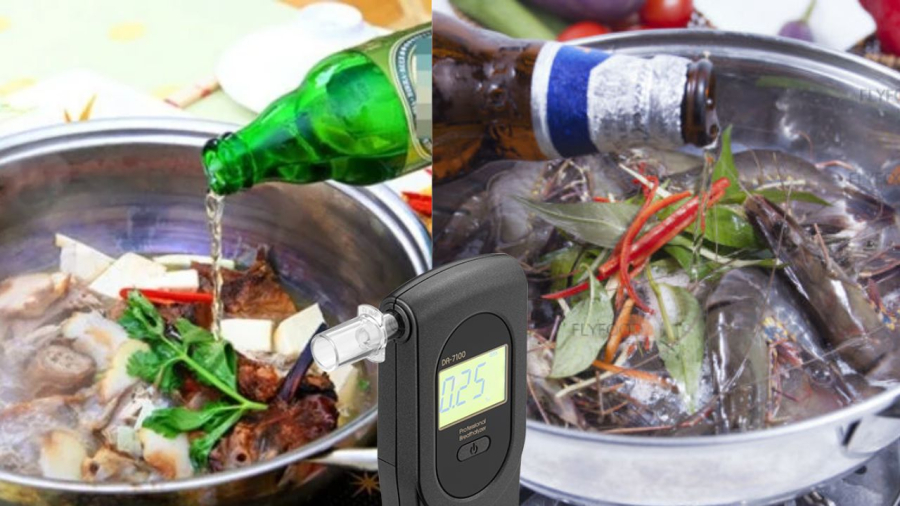Alcohol consumption has been a topic of concern for many, not just from a health perspective but also in relation to road safety, state regulations, and the impact on one’s ability to operate vehicles.
Recent public discussions have centered around the presence of alcohol in one’s breath after consuming food prepared with alcoholic beverages. It is indeed true that many culinary delights are crafted using wine or beer as a key ingredient. From marinating meat and seafood in alcohol to using it as a cooking medium for dishes like beef, chicken, or seafood stews, the residual alcohol can indeed leave its mark.
For instance, consider dishes like carp steamed in beer, beef dipped in vinegar hot pot, or beef stewed in wine. Similarly, dishes prepared with strong liquor or wine, such as chicken or pork trotters stewed in alcohol, will also result in alcohol being present in the breath after consumption.

Using Alcohol in Cooking Can Leave Traces in Your Breath
The amount of alcohol left in these dishes depends on the quantity used during preparation, and it’s important to note that while some of it evaporates during cooking, not all of it does. Hence, the presence of alcohol in one’s breath after consuming these dishes is directly related to the amount of alcohol used in cooking and the amount consumed.
Although consuming these dishes may not impair one’s ability to drive, it is important to understand that alcohol will still be present in the breath. Typically, the body will eliminate all traces of alcohol within 30 minutes of consumption or after drinking ample water, and this timeline can vary depending on individual health factors.
Additionally, one’s eating habits can also influence the elimination process. When one consumes a substantial amount of food before drinking beer or eating alcohol-infused dishes, the absorption and elimination rates are affected. In such cases, 20% of the beer is absorbed in the stomach, while 80% is absorbed in the small intestine. A stomach filled with food will slow down the absorption and elimination process.

Alcohol Elimination Varies Based on Individual Factors and Eating Habits
According to regulations, drivers must have a zero alcohol level when operating vehicles. If you’ve consumed alcohol-infused dishes and are subjected to a breathalyzer test, you can request to be tested again after a 15-minute break and drinking some water.
To understand how much alcohol your body has processed, consider the following: One standard drink unit contains 10g of alcohol, which is equivalent to 1 shot of strong liquor (30ml), 1 glass of wine (100ml), 1 mug of draft beer (330ml), or 3/4 of a bottle/can of beer (5%, 330ml). Depending on the quantity consumed, you can estimate the number of drink units. A healthy individual’s liver typically processes one drink unit per hour. However, those with impaired liver function or slower metabolism may take longer. Even after the liver has processed all the alcohol, it takes additional time for the alcohol to be completely eliminated from the blood.
Experts advise against attempting to calculate the exact elimination time due to individual variations in metabolism and eating habits. The best course of action is to refrain from driving after consuming alcohol to mitigate any potential risks to yourself and others.






































